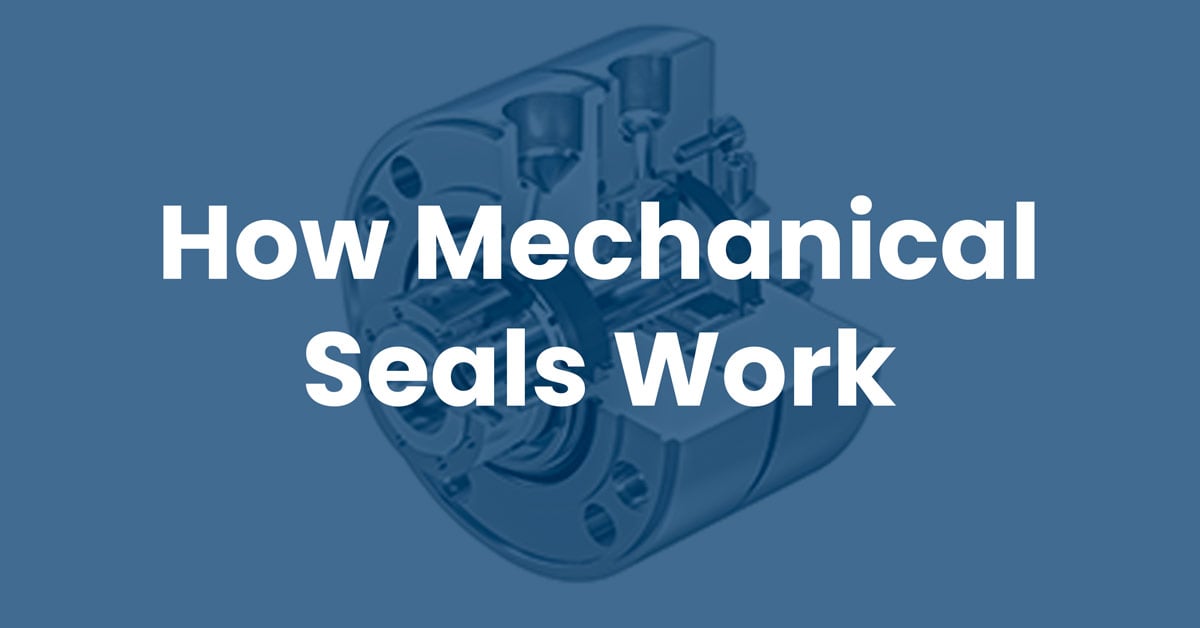Home » Blog » How Mechanical Seals Work in Pump Applications
How Mechanical Seals Work in Pump Applications

Mechanical seals form a critical part of any mechanical operation involving fluid movement through rotational shafts, such as in the case of pumps. These seals ensure that the fluid does not leak out of a closed system and contaminants do not enter the system. In pumping applications, mechanical seals are placed at the point of entry or exit of a rotating shaft, preventing the pressurized fluid from escaping the pump housing and withstanding the friction generated from the shaft rotations.
Read on to learn how mechanical seals work and explore some popular use cases of seals in pump applications.
What are Mechanical Seals?
Mechanical seals are devices that accommodate a rotating shaft while containing and preventing the fluid from leaking out of the enclosed housing. While different mechanical seal designs are available for pumping applications, most have three sealing points.
- Rotating face that rotates with the shaft
- Stationary face fitted to the pump housing
- Interface portion between the rotating and stationary face of the seal
These three sealing points ensure that the fluid contained within the pump housing does not leak while also preventing dust particles in the atmosphere from entering the housing. The mechanical seals are usually made up of different materials to prevent sticking. Typically, one side of the seal uses softer materials like carbon graphite, and the other is made of harder materials such as silicon carbide or ceramic alumina. However, hard materials are preferred for both surfaces if the pumping application involves abrasive fluids.
In addition to the two materials, the sealing unit also comes with O-rings to seal the stationary face on the housing side and the rotating face on the shaft side. Springs are also used to keep both faces pressed.
In most cases, the two faces of the seals are also lubricated to prevent friction and wear. Depending on the application, this fluid film can either be a separate lubricant or the process fluid itself.
Types of Mechanical Seals
Several types of mechanical seals are available. Some of the popular ones include:
- Balanced and unbalanced seals
- Pusher and non-pusher seals
- Cartridge seals
Working Principle of a Mechanical Seal
![John-Crane-fully-split-mechanical-seal[1]](https://blog.hayespump.com/hs-fs/hubfs/John-Crane-fully-split-mechanical-seal%5B1%5D.jpg?width=226&name=John-Crane-fully-split-mechanical-seal%5B1%5D.jpg) As described in the previous section, a mechanical seal consists of rotary and stationary faces running against each other. These faces apply a closing force against each other using springs and the pressure generated from the process fluid. This way, a seal is formed to prevent the fluid from leaking between the rotating shaft and the pump housing.
As described in the previous section, a mechanical seal consists of rotary and stationary faces running against each other. These faces apply a closing force against each other using springs and the pressure generated from the process fluid. This way, a seal is formed to prevent the fluid from leaking between the rotating shaft and the pump housing.
Mechanical Seals in Pump Applications
Mechanical seals can be selected based on the type of pump application. Choosing the wrong seal can affect pump performance and lead to damage and costly repairs. An unbalanced mechanical seal is preferred if the pump needs to operate at a lower pressure. However, high pressure pumping applications require balanced mechanical seals. Balanced seals also perform better in high temperature operating conditions. Cartridge seals require less maintenance but are more expensive, hence used for limited applications.
Choosing a Mechanical Seal For Your Application
At Hayes Pump, we have a fully staffed, factory-trained parts department to help you quickly with the correct mechanical seal for your pump. You can request a quote for your part or contact us to get further assistance.




